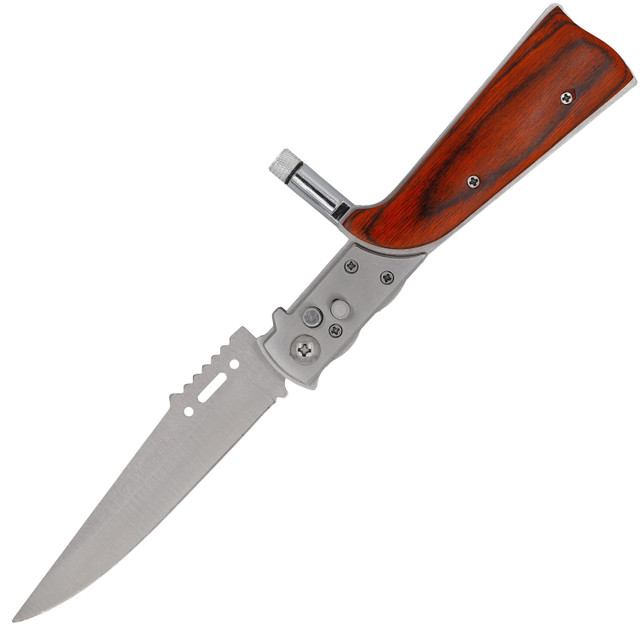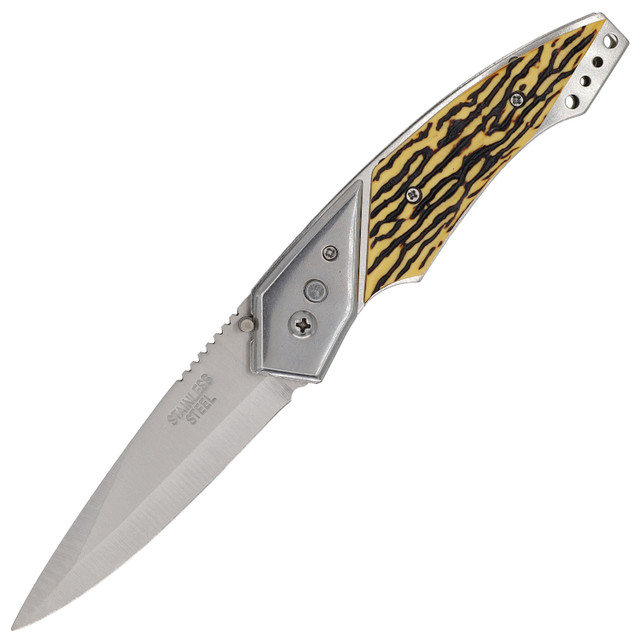Preventing Rust and Corrosion on Your Switchblade Knives: Best Practices
Posted by SwordsSwords on Sep 9th 2025
Switchblade knives are prized for their quick deployment and sleek design, making them a favorite among collectors and users alike. However, like any metal tool, they are susceptible to rust and corrosion if not properly cared for. To ensure your switchblade knives remain in top condition, it's essential to follow best practices for preventing rust and corrosion. Here are some tips to help you maintain your flick knife, Italian switchblade knife, or any other type of switchblade knives.
1. Regular Cleaning
Keeping your switchblade knife clean is the first step in preventing rust and corrosion. After each use, wipe down the blade with a soft cloth to remove any dirt, fingerprints, or moisture. If your knife comes into contact with food, blood, or other substances, wash it with mild soap and warm water, then dry it thoroughly. Avoid using harsh chemicals or abrasive materials that can damage the blade's finish.

2. Proper Drying
Moisture is the enemy of metal, leading to rust and corrosion. Always dry your switchblade knives completely after cleaning or exposure to water. Use a soft, absorbent cloth to remove any moisture, paying special attention to the pivot area and other hard-to-reach spots. For extra protection, consider using a hairdryer on a low setting to ensure all moisture is eliminated.
3. Lubrication
Lubrication is crucial for the smooth operation of a flick knife and also helps protect against rust. Apply a light coat of high-quality oil designed for knives to the blade and pivot area. This creates a barrier that repels moisture and reduces friction during deployment. Be sure to wipe off any excess oil to prevent dirt and debris from sticking to the blade.
4. Proper Storage
How you store your switchblade knives can significantly impact their longevity. Keep your knives in a dry, cool place away from humidity and temperature extremes. Using a knife case or pouch with a soft lining can provide additional protection. If you live in a particularly humid environment, consider using a dehumidifier in your storage area or placing silica gel packets with your knives to absorb excess moisture.

5. Avoiding Exposure to Harsh Elements
Exposure to saltwater, acidic substances, and other harsh elements can accelerate rust and corrosion. If you use your flick knives in such environments, take extra care to clean and dry them immediately afterward. For outdoor activities, consider using a knife with a corrosion-resistant coating or a stainless-steel blade, as these materials are less prone to rust.
6. Routine Inspections
Regularly inspect your switchblade knives for any signs of rust or corrosion. Early detection allows you to address the issue before it becomes severe. If you notice any rust spots, use a rust eraser or fine steel wool to gently remove them. Follow up with a thorough cleaning, drying, and lubrication to restore the knife's protective barrier.
7. Use a Protective Coating
Applying a protective coating to your Italian switchblade knives can provide an extra layer of defense against rust and corrosion. Products such as Tuf-Glide or WD-40 Specialist Long-Term Corrosion Inhibitor can be applied to the blade to create a long-lasting barrier. Be sure to reapply the coating periodically, especially after cleaning or exposure to harsh conditions.
8. Avoiding Prolonged Storage in Leather Sheaths
While leather sheaths offer excellent protection and a classic look, they can also retain moisture, leading to rust. If you store your switchblade knives in leather sheaths, remove them periodically to allow the knives to air out. Consider using a synthetic or nylon sheath for long-term storage, as these materials are less likely to trap moisture.
9. Handling with Care
Your hands can transfer oils, sweat, and other contaminants to the blade, promoting rust. Handle your Italian switchblade knife by the handle as much as possible, avoiding contact with the blade. After handling, wipe down the blade with a soft cloth to remove any residues.
10. Purchasing Quality Knives
Investing in high-quality switchblade knives can make a significant difference in their resistance to rust and corrosion. Look for knives made from high-grade stainless steel or those with protective coatings. When shopping for switchblade knives for sale, be sure to purchase from reputable dealers like swordsswords.com, which offers a wide selection of premium flick knives and Italian switchblade knives.
Conclusion
Preventing rust and corrosion on your switchblade knives requires regular maintenance, proper storage, and careful handling. By following these best practices, you can ensure your knives remain in excellent condition for years to come. Clean and dry your knives thoroughly, apply protective coatings, store them in a dry environment, and inspect them regularly for signs of rust. When buying new knives, consider high-quality options from trusted sources. With these steps, your switchblade knives will stay sharp, reliable, and free from rust and corrosion.

